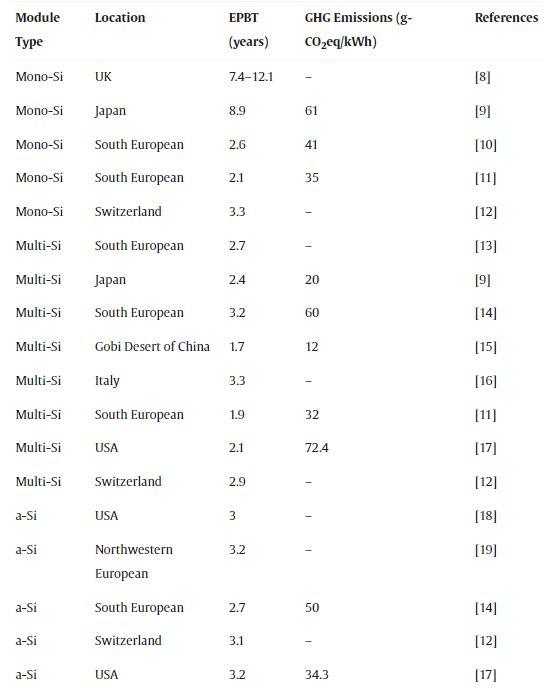
One of the most overlooked quantities of the energy transition is Energy Payback Period (“EPBP”) and its implications. EPBP is a simple concept: How many years does it take for the energy produced by a renewable energy technology to equal the amount of energy it took to manufacture the renewable technology.
The reason EPBP is so important is that the energy transition is not about substitution (changing from one form of energy generation to another), rather it is a transfer payment – taking energy from one application to use in another. In this instance, it is taking fossil-based energy to make the solar panels and wind turbine whose electricity generation will later replace the fossil fuel required to build them.
To keep this post short and simple, I will restrict my discussion to solar PV and ignore other renewable technologies. The following table displays the EPBP of a variety of solar PV technologies deployed at different geographies. The average across all forms of solar PV is 3.3 years – this means that it takes 3.3 years of solar panel electricity generation to equal the amount of energy required to manufacture the solar panel.

This might be a surprise. Solar PV is one of the most energy-intensive products on the planet. The process of taking sand and turning it into 99.999% pure silicon requires an enormous amount of electricity. Today the primary energy used to make solar panels is coal since they are largely manufactured in China. A more telling ratio should be CEPB the (Carbon Emission Payback Period, or CEPBP), and the payback period would be much worse since coal is the worst GHG emitter.
Let’s look at this from a different perspective: Assume that by 2030 (only 6 years from now) we want solar to be 50% of the energy on the grid, up from 4% today (according to the EIA), or a percentage point increase. How much of the current grid’s energy production would be required to add that much solar?
That is simply: 46% times 3.3 years, or 152% of the current grid’s capacity. Since we have 6 years to accomplish this, then 152% divided by 6 equals 25% per year. Stated a different way, we need to divert roughly 25% of the energy of the grid for the next 6 years to the manufacture of solar panels to achieve 50% energy contribution by photovoltaics (and this assumes no load growth over this 6 years, no EV, no electrification, no heat pumps).
The grid does not have 25% excess capacity. So, to affect this diversion would require taking energy away from some other use. Since GDP and energy consumption are 98% correlated, the diversion of 25% of the energy running our economy means a reduction of 25% in our standard of living. I do not believe that the population of the world is willing to take a 25% reduction in their quality of life.
Unfortunately, the outlook is even worse. As we electrify things, such as transportation and heating, we are now replacing one form of energy (fossil fuel) with electricity adding substantially to the grid load. If we factor this into our energy payback calculation, a 50+% reduction in quality of life will be required to meet our 50% solar by 2030 goal.
Much of the focus of the energy transition is on its technical feasibility, and I do not dispute that it is technically possible. While it may be technically possible, it is not economically or politically feasible. Maybe I am simply too much of a pessimist, but I sincerely doubt that the population of the world will agree to reduce their standard of living by 50% for an extended eriod of time.
Our procrastination has put us in an impossible situation.
We need to plan for and start investing in adaption because the worst is still to come.
